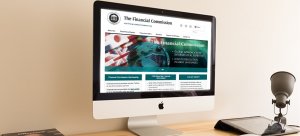Institutional ECN battleground hots up as Thomson Reuters D2C venue makes 166% annual volume increase on FX options
The battle for supremacy among institutional ECNs (electronic communication networks) which provide relationship and bi-lateral environments is most certainly intensifying. During the course of 2015, Thomson Reuters toughed it out alongside its peers, notably its closest competitor which is ICAP’s electronic brokerage division EBS, achieving very similar trading volumes on a monthly basis. Looking at […]

The battle for supremacy among institutional ECNs (electronic communication networks) which provide relationship and bi-lateral environments is most certainly intensifying.
During the course of 2015, Thomson Reuters toughed it out alongside its peers, notably its closest competitor which is ICAP’s electronic brokerage division EBS, achieving very similar trading volumes on a monthly basis.
Looking at the overall volume is a valuable measure of market share, however, when dissecting the performance on an asset class basis, certain strengths in certain areas become apparent. Today, Thomson Reuters has reconciled its entire annual trading metrics, and announced that its FX dealer-to-client venue achieved a vast upturn in options trading volumes.

The upturn in options trading volumes for 2015 was 166% compared to that of the entire year 2014 for Thomson Reuters’ FX dealer-to-client venue.
The last three months of the year were particularly strong, with record-high monthly, weekly and daily volumes with over 36 global and local active options price-makers and more than 225 active options price-takers now on Thomson Reuters FX platform.
As the electronic trading industry becomes increasingly more focused on multi-asset trading, Thomson Reuters is making more of a high profile aspect of this part of its business. The company, which bought FXall just over three years ago for $625 million and bringing on board FXall CEO Phil Weisberg to head Thomson Reuters’ global FX operations, has an integrated institutional FX venue which operates relationship trading (bank-to-client) and bi-lateral trading (interbank) for vanilla and exotic FX options.
According to the company, during recent months Thomson Reuters’ electronic brokerage division has introduced electronic FX options callouts to streamline how banks can access options liquidity in the interbank market. By providing one single point of access to options liquidity via electronic callouts or via Thomson Reuters FXall dealer-to-client request-for-quote service, FX Trading helps market participants to efficiently manage their trading risk.
Phil Weisberg, Managing Director, Global Head of Foreign Exchange at Thomson Reuters today made a commercial statement regarding the importance of FX options within Thomson Reuters’ FX division.
“Due to their inherent complexity, FX options have been the last FX instrument to move from OTC markets to electronic platforms, but best execution requirements are seeing options volumes and participants on our platforms really flourish.”
“We are finding that in today’s highly fragmented and increasingly scrutinized FX market, price-takers – buy-side firms and smaller banks – want to use platforms that offer optimal transparency and help them prove effectiveness of execution whether it is mandated or not. They also want the efficiency and flexibility that comes with the feature-rich workflow tools that electronic platforms can provide.”
Photograph copyright Andrew Saks-McLeod









